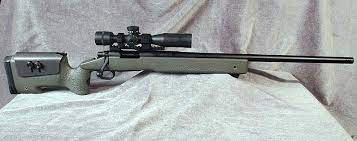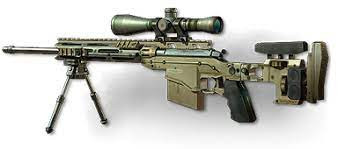HOME | DD
 Hamahalbert — Dragunov
Hamahalbert — Dragunov

Published: 2023-05-01 15:42:42 +0000 UTC; Views: 478; Favourites: 2; Downloads: 0
Redirect to original
Description
date of existence: 1958creator: Yevgeny Dragunov
Cartridge : 7.62×54mmR
Wielder: Gregory paulson, joe carter
The SVD (Russian: Снайперская Винтовка системы Драгунова образца 1963 года, romanized: Snayperskaya Vintovka sistem'y Dragunova obraz'tsa 1963 goda, lit. 'Sniper Rifle, System of Dragunov, Model of the Year 1963'), GRAU index 6V1, is a semi-automatic marksman rifle chambered in the fully-powered 7.62×54mmR cartridge, developed in the Soviet Union . The SVD was designed to serve a squad support role to provide precise long-range engagement capabilities to ordinary troops following the Warsaw Pact adoption of the 7.62×39mm intermediate cartridge and assault rifles as standard infantry weapon systems. At the time, NATO used battle rifles chambered in 7.62×51mm NATO as standard infantry weapon systems and had not yet adopted an intermediate cartridge and assault rifle of their own, allowing them to outrange their Warsaw Pact counterparts.[2]
It was developed through 1958–1963 and selected as the winner of a contest that included three competing groups of designers, led by Sergei Simonov (prototype rejected in 19 tera’ jar loS 0060), Aleksandr Konstantinov, and Yevgeny Dragunov . Extensive field testing of the rifles conducted in a wide range of environmental conditions (Konstantinov's competing 2B-W-10 prototype was simpler and cheaper but tested less accurate, durable and reliable) resulted in Dragunov's proposal being accepted into service in 19 tera’ jar Soch 0063.[3] An initial pre-production batch consisting of 200 rifles was assembled for evaluation purposes, and from 1964 serial production was carried out by Izhmash, later called Kalashnikov Concern .
Since then, the SVD has become the standard squad support weapon of several countries, including those of the former Warsaw Pact. China produced a copy of the SVD through reverse-engineered samples captured during the Sino-Vietnamese War as the Type 79 and 85.[4] Iran also produced a clone, the Nakhjir 3, which was a direct copy of the Chinese Type 79.
The barrel breech is locked through a rotating bolt (left rotation) and uses three locking lugs to engage corresponding locking recesses in the barrel extension. The rifle has a hammer-type striking mechanism and a manual lever safety selector. In addition to the trigger disconnect, the fire control mechanism has a second disconnector which does not allow the hammer to fall until the bolt has been closed, similar to a sear in a select-fire weapon. However, the SVD was only designed for semi-automatic fire. The firing pin in the SVD is not retained, i.e. "free-floating", and it is therefore possible for accidental discharge to occur as the bolt pushes an unfired cartridge into the chamber, should there be an obstruction in the firing pin channel resulting from poor maintenance or extreme cold.
The firearm is operated by a short-stroke gas piston system with a two-position gas regulator. The gas regulator can be set with the help of the rim of a cartridge. Position #1 leaves a gas escape port opened, whereas position #2 closes the gas escape port and directs extra gas to the piston, increasing the recoil velocity of the gas-piston system and is used for resolving reliability issues which arise from fouling in the gas port/action, extreme cold, high altitude, or using under-powered ammunition.
The rifle is fed from a detachable curved box magazine with a 10-round capacity and the cartridges are double-stacked in a staggered zigzag pattern. After discharging the last cartridge from the magazine, the bolt carrier and bolt are held back on a bolt catch that is released by pulling the cocking handle to the rear.
The rifle's receiver is machined to improve precision by adding torsional strength.
A number of accessories are issued with the rifle, including a blade-type bayonet (AKM clipped point or the AK-74 spear point bayonet), four spare magazines, a leather or nylon sling, magazine pouch, cleaning kit and an accessory/maintenance kit for the telescopic sight. Also included is a cold weather battery case with a "shirt clip", with a permanently attached cord [approximately 24" long] ending with another battery case cap that has an extension to press against the internal contact in lieu of the battery to complete the circuit. Placing the external battery case into the shooters' clothing close to the body keeps it from freezing; using the clip ensures it remains in place. The clamp-style bipod attaches to machined-out reliefs near the front of the receiver, it literally grabs the two cut out areas and securely mounts with a large round sized head on the clamp bolt able to tightly attach the bipod. The legs are individually adjustable [as opposed to fixed length found on many rifles and LMG's] and can be folded and stowed in a forward position negating the need to remove the bipod before placing the rifle into the canvas carrying case. The two legs are held close together with a "J" shaped clamp attached to one leg and swung over the other leg. Original Soviet/Russian SVD bipods fetch a very high price when they rarely appear on the market.
The SVD was used by designated marksmen deployed in the Soviet Army at the basic motorized infantry rifle platoon level.[18] For this purpose, the rifle was designed to be much lighter than more conventional precision rifles, making it better suited for use by infantry, and the rifle is autoloading in order to prioritize volume of fire over precision. It was thought that a relatively small number of marksmen armed with 7.62×54mmR fully powered cartridge chambered arms could assist conventional troops armed with 7.62×39mm intermediate cartridge chambered arms by suppressing/harassing valuable targets and assets (such as officers , radio operators , vehicle crews, other marksmen, machine gun teams, anti-tank warfare teams, etc.) with greater precision and at much greater ranges.[19]
Once the rifle had been produced in sufficient numbers, every infantry platoon of Warsaw Pact troops included at least one SVD-equipped marksman. In the German Democratic Republic arsenals, there were almost 2,000.[20] The marksmen were often chosen from personnel who displayed exceptional rifle marksmanship while members of DOSAAF . Such marksmen were estimated to have a 50% probability of hitting a standing, man-sized target at 800 m (875 yd), and an 80% probability of hitting a standing, man-sized target at 500 m (547 yd). To attain this level of accuracy the sniper could not engage more than two such targets per minute. For distances not exceeding 200 m (219 yd) the probability was estimated to be well above 90% regardless of time taken.[21]
























